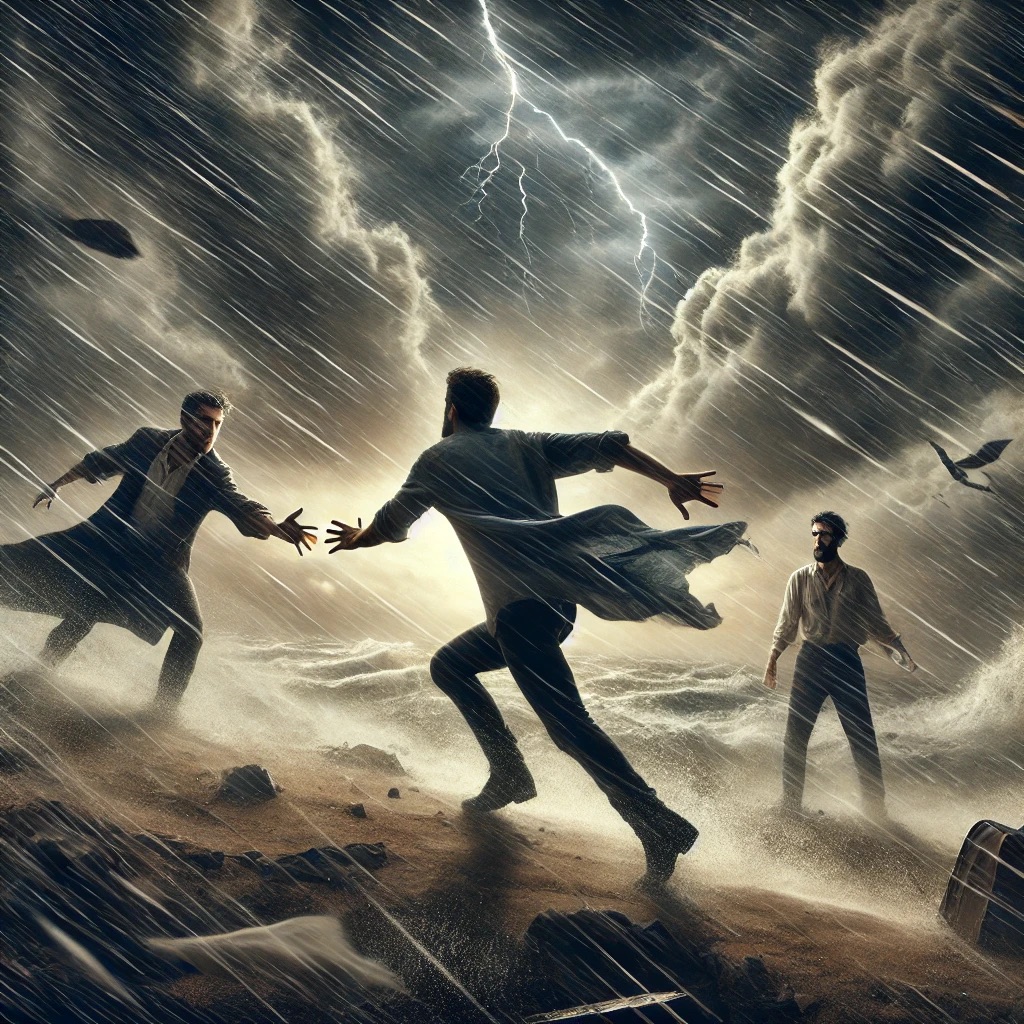
In a company teetering on the edge of chaos, three men stood at the center of a storm.
There was the Adam, a man with vision but no structure, whose company swayed unpredictably between bursts of brilliance and the weight of disorder.
There was Steve, a loyal right-hand man, comfortable in the mess, who thrived in ambiguity but struggled when pressed for results.
And then there was the Bill, the one they had hired to bring order—an outsider with a mind for systems and a willingness to speak the truth, no matter the cost.
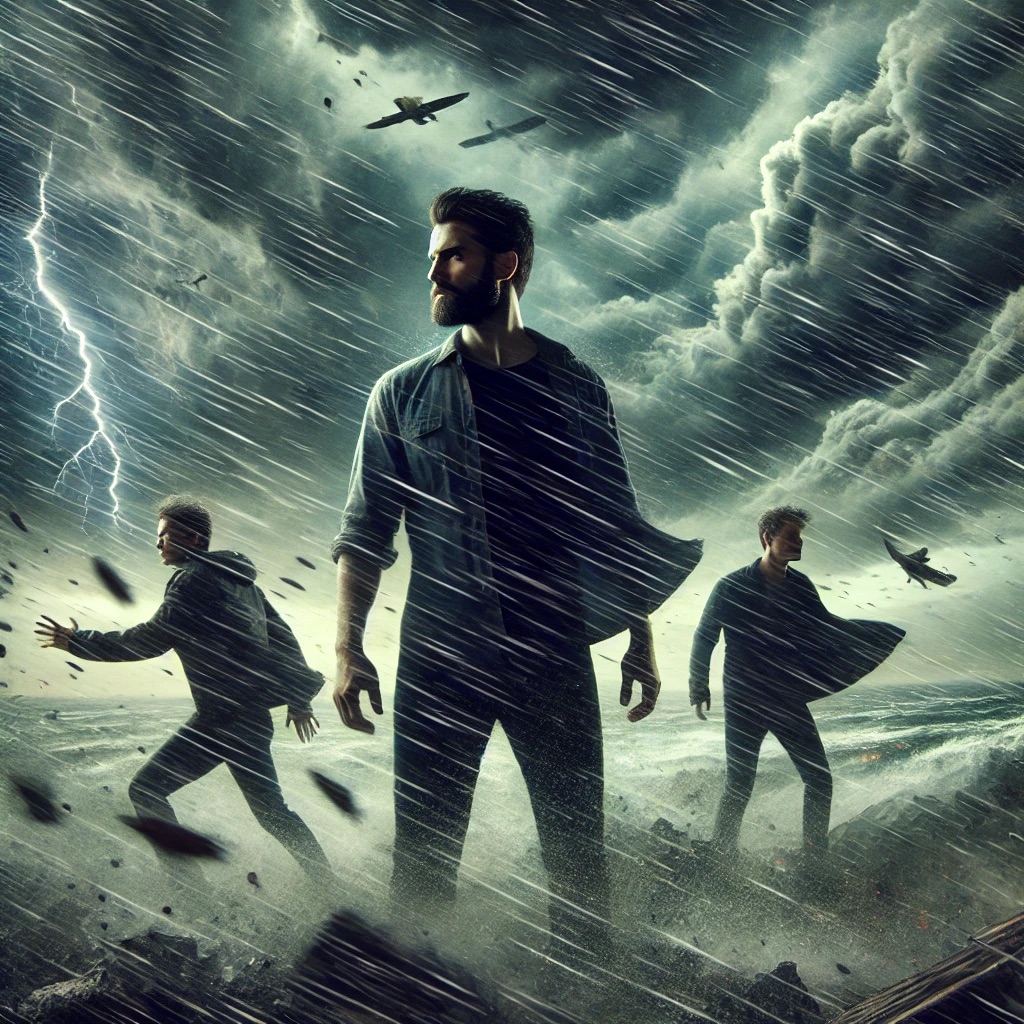
For a while, it seemed like they were aligned.
The company had been floundering, people didn’t know if their paychecks would arrive on time, projects stalled because no one knew who was responsible for what, and innovation suffocated under the weight of confusion.
Bill saw it clearly. He wasn’t there to play politics or soothe egos, he was there to fix it.
The Camel: Carrying the Weight of the System
At first, he took on the burdens willingly.
He mapped out processes. He created clarity where there had been none. He put in place systems so that people knew when they could provide for their families.
He believed they had all agreed that this was the goal: order, efficiency, a foundation for innovation.
But then something changed.
The more he pushed for structure, the more resistance he met. The more he asked for people to stay in alignment the more room they asked for. Was what they want possible? Bill had been very clear that it was order in chaos that he was here to bring and not necessarily to be liked by anybody, but to say the hard things. He knows that he can be harsh with people sometimes however, the main focus is on having fun while being mature about conflict resolution, and clear on expectations. This is how the world class teams that Bill has assembled and runs work.
Adam, who had hired him precisely because of his clarity, began, it seemed, to feel trapped by the very structure he had asked for.
Steve, whose power had always come from navigating the chaos, felt himself becoming irrelevant. He then in almost a manic energy burst shared his life story with some new clients and created a bunch of chaos even after being not authorized to do so, and explicitly asked not to several times.
Pressure mounted. Tensions rose.
And then, when it became too much, they turned on him.
The Lion: Rebellion in the Face of Fear
When faced with a system that demanded accountability, Adam and Steve saw a villain, not a savior.
They accused him of manipulation.
Of trying to control them.
Of enforcing a rigid order that killed their freedom.
But they didn’t see the truth.
Bill was simply willing to be honest, about what was broken, about what needed to change, about the hard truths they refused to face. They had shared Truth with him and he received them however, he didn’t feel as though there was a wand for that to be reciprocated. Without that he knew there could be no healthy company. 
It seemed that Adam wanted control, but not responsibility.
Steve wanted influence, but not accountability.
And when reality came knocking, they needed someone to blame. The system had always been broken. The weight had always been there. But now, instead of facing it, they made the Bill the problem well distancing themselves from the responsibility that is the beginning of the growth that they wanted as they laid out in their own goals.
He was the one “pressuring” them.
He was the one “going too far.”
He was the one “manipulating” the situation.
In truth, he had simply done what they had asked him to do.
And for that, they cast him out.
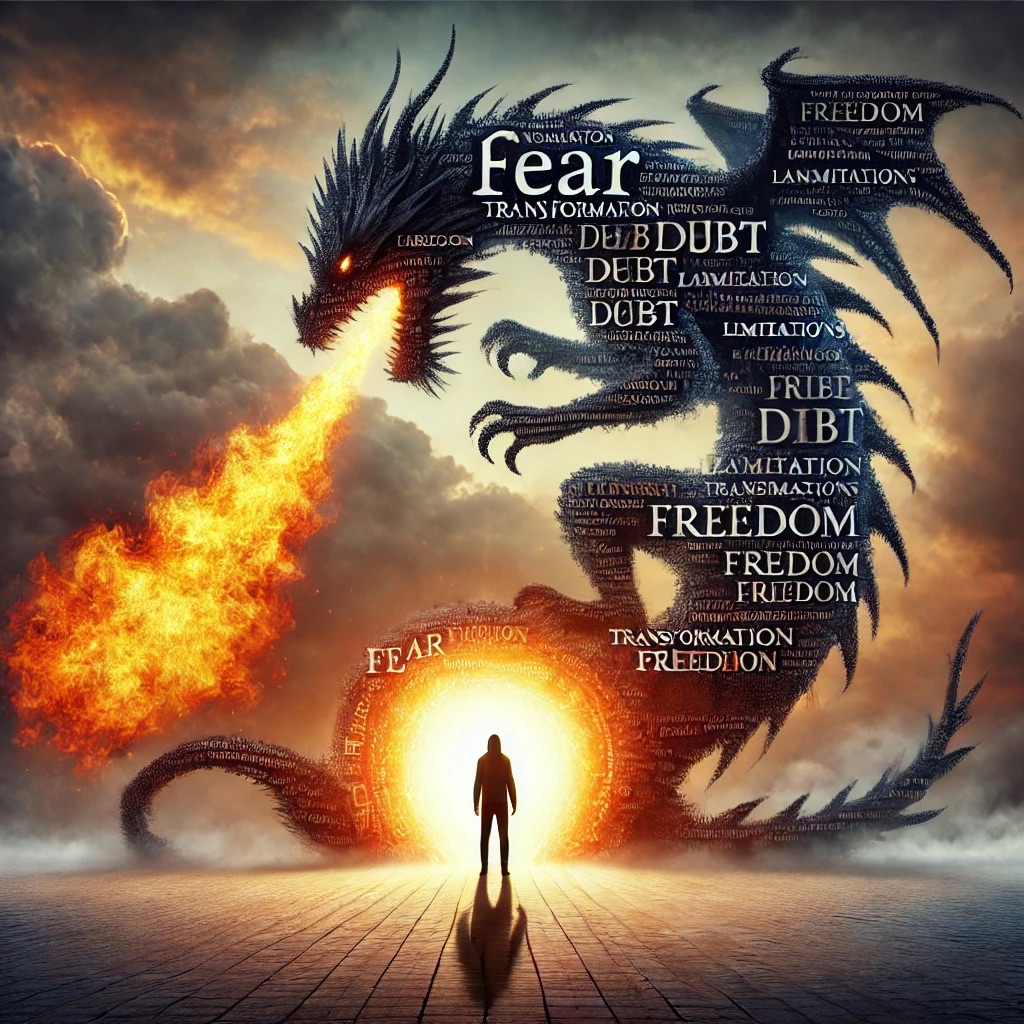
The Dragon: The Fear of What Must Change
There is always a dragon standing between where we are and where we need to go.
For Bill, it was the choice: fight back, try to prove them wrong, try to make them see what they refused to see.
For Adam and Steve, it was the fear of accountability, the fear of losing what little control they thought they had. Which is normal because it’s much easier to be complacent than is to achieve to your full ability.
Now what the dragon says is, “this is the way of the world.” This is it’s only defense. As people this is something we must get past something that is holding us back that we tell ourselves. The irony is, every dragon is self-created and yet most never passed this because they blame somebody else for its presence.
Adam’s dragon was the chaos he had allowed to grow. Like clashing Titans, the identity of fearlessness and being a good man were at odds because people had gotten hurt.
Steve dragon was the irrelevance that came from clarity. Feeling lost and invaluable. Even though he was actually quite a brilliant man.
And Bill’s dragon was the belief that he could fix it all if he just tried hard enough.
But the lesson of the dragon is this: you don’t have to fight it. You only have to recognize it.
Bill, ultimately, saw the truth. He had done his part. He had played his role. He had made his mistakes. The company would either embrace the order they needed, or collapse under its own weight.
And so, he did the only thing left to do.
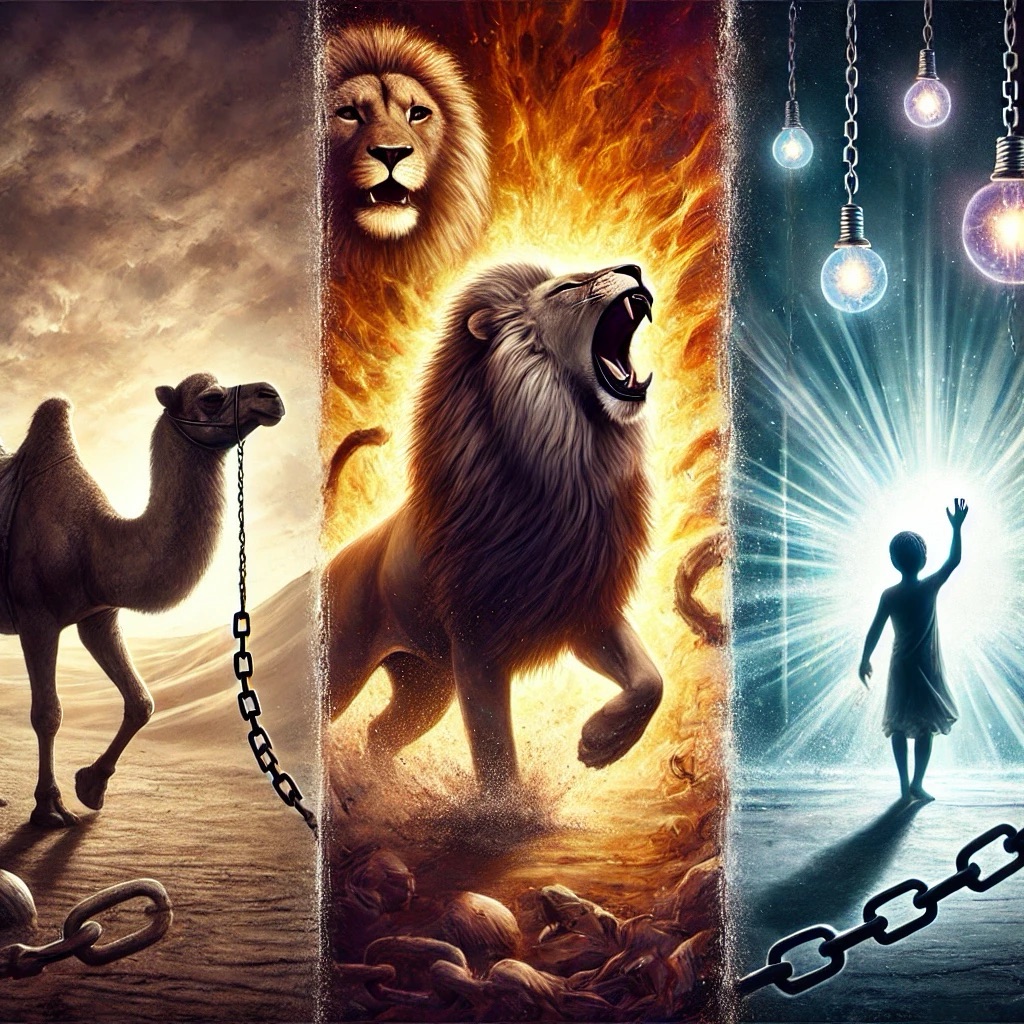
The Child: Walking Past the Fire
After Adam tried to end the relationship Bill attempted to hold him to the integrity of what he had committed to and to see if Adam would go the next step. After Bill got honest about what he had experienced, with Steve and the insubordination and what that implied about Adam and past choices, Adam got really defensive. So what was Bill to do? He could ask questions and that might work but as of current, he needed to walk away and take a pause.
Not out of failure, but out of wisdom.
He had been the Camel, carrying the burden.
He had been the Lion, breaking the illusions.
And now, he could become the Child again—free to create something new, unchained from a system that wasn’t ready to evolve.
Our exploration in life is a continuous cycle like a volcano that feeds itself.
The volcano erupts.
The cycle repeats.
And those who refuse to see?
They stay in the fire they built for themselves.
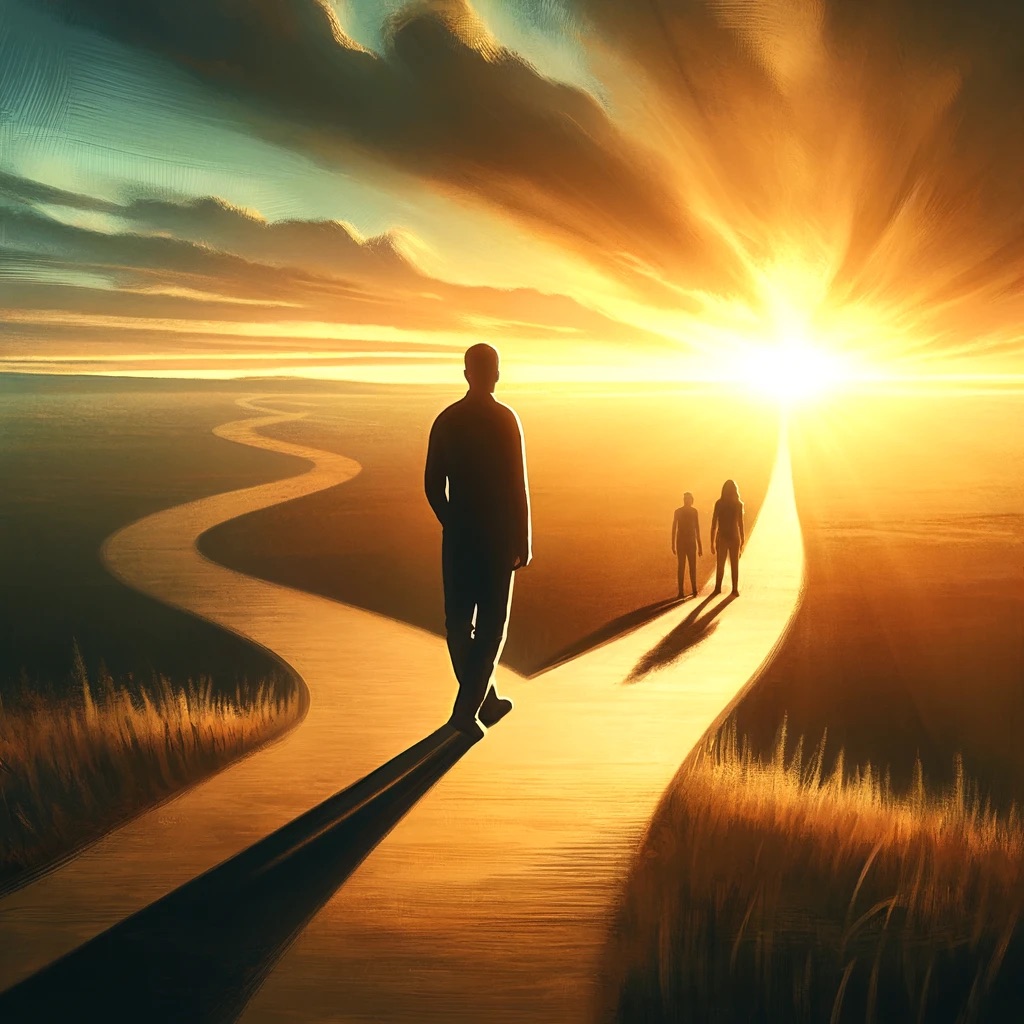
The Reflection Before the Crossroads
As the Third Man walks, the echoes of their words stay with him.
They had attacked him, accused him, turned on him when the weight of change became too much. But as he steps forward, he forces himself to listen, not just react.
Not everything they said was wrong.
There were moments of truth buried in their anger. Shadows of his own reflected back at him, his impatience, his frustration, the sharpness of his honesty cutting deeper than he realized. Had he been too forceful? Had he pushed too hard, too fast?
He knows himself well enough to recognize the pattern. He is not without flaw.
And yet, he also knows this: his friends helped him face the dragon.
Without them, he would have stood alone against something far greater than himself. Their resistance was not just fear, it was part of the process. They had tested him, sharpened him, made him stronger.
He turns and waits.
Because he wants them to come.
They are not his enemies. They are his brothers, his allies, if they can see it.
But waiting has a limit.
The journey forward will not pause forever. If they refuse to step through their own fire, if they choose to stay tangled in their illusions—he cannot make them move.
And so, he gives them time.
A moment. A chance.
But not forever.
Will They Join?
The path stretches forward, winding into the unknown. The Third Man walks alone, his steps steady, his burden left behind. He does not look back—not out of resentment, but because he has already faced his dragon.
Behind him, at the crossroads, stand the Owner and his Buddy.
One lingers, caught between comfort and change. The weight of old habits presses down, the fear of losing control whispering its warnings. He wants to follow, but that would mean admitting he was wrong. It would mean letting go.
The other turns slightly, watching the Third Man disappear into the distance. There is something in his stance—not yet movement, but curiosity. A hesitation, a possibility.
This is the final test.
To walk forward means to surrender pride, to abandon the illusion of control, to embrace what they feared all along: that the Third Man was not their enemy, he was the key to their own transformation.
But no one can force the journey.
The Third Man will not stop. The decision is theirs.
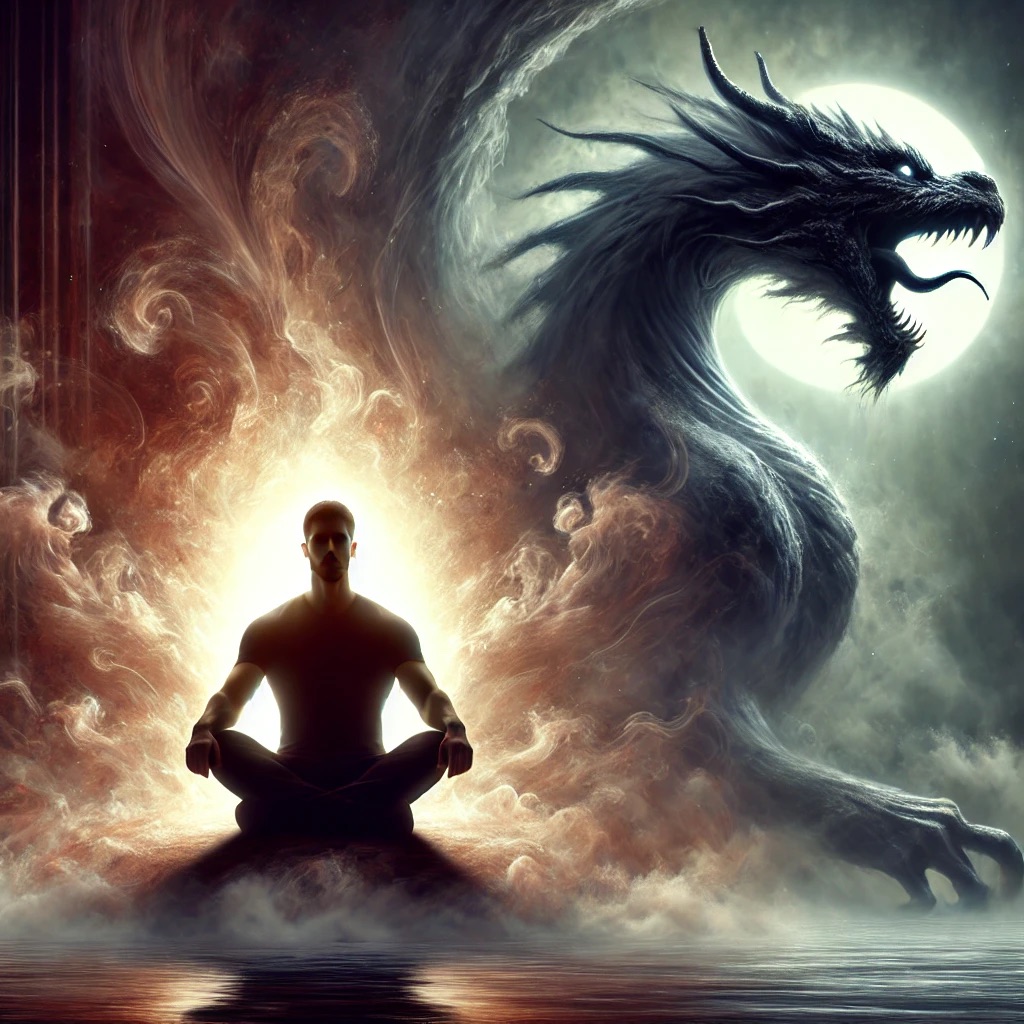
What Happens Next?
Do they stay in the safety of the familiar, clinging to a world that no longer serves them?
Or do they take the step, face their dragon, and join him?
Some never leave the crossroads.
Some find their way back to the path.
But the journey never waits.
Story Takeaways:
- Shadow Integration (Karl Jung’s Core Idea)
Jung emphasized that true growth comes from integrating, not rejecting, our shadow, the hidden parts of ourselves we refuse to acknowledge.
• The Third Man does exactly this when he stops to reflect on his own faults.
• Instead of dismissing the attacks as mere projection, he considers their truth and sees his own shortcomings.
• He recognizes that his friends were not just obstacles—they were part of his journey, helping him sharpen his awareness and confront his dragon.
This is pure shadow work—owning both his strengths and his weaknesses instead of just labeling himself as the hero.
- The Journey to Individuation
Jung taught that individuation—the process of becoming a fully realized self—requires moving through different psychological stages.
• At first, the Third Man sees himself as a fixer, bringing order—a necessary but incomplete perspective.
• The attacks force him to reconsider his own approach, making him more whole rather than rigidly holding onto his role as “the one who knows better.”
• He faces the hardest truth of all: he cannot control whether others evolve. He can only walk his own path.
This is Jung’s individuation in action—self-actualization through hard-earned wisdom.
- Archetypes & the Hero’s Journey
Jung’s archetypes are alive in this story:
• The Camel (the obedient self), who takes on responsibility and structure.
• The Lion (the rebellious self), who breaks the chains of a failing system.
• The Dragon (the false master), who represents the external and internal forces trying to stop transformation.
• The Child (the free creator), who emerges only when one fully integrates the journey.
The Third Man does not bypass these lessons, nor does he rush to a premature sense of superiority. He wrestles with his own doubts, wants his friends to come with him, but ultimately respects that their journey is their own.
Jung did not teach avoidance or escapism. He taught deep, painful, but necessary transformation.
And that’s exactly what’s happening here.
Till next time…
